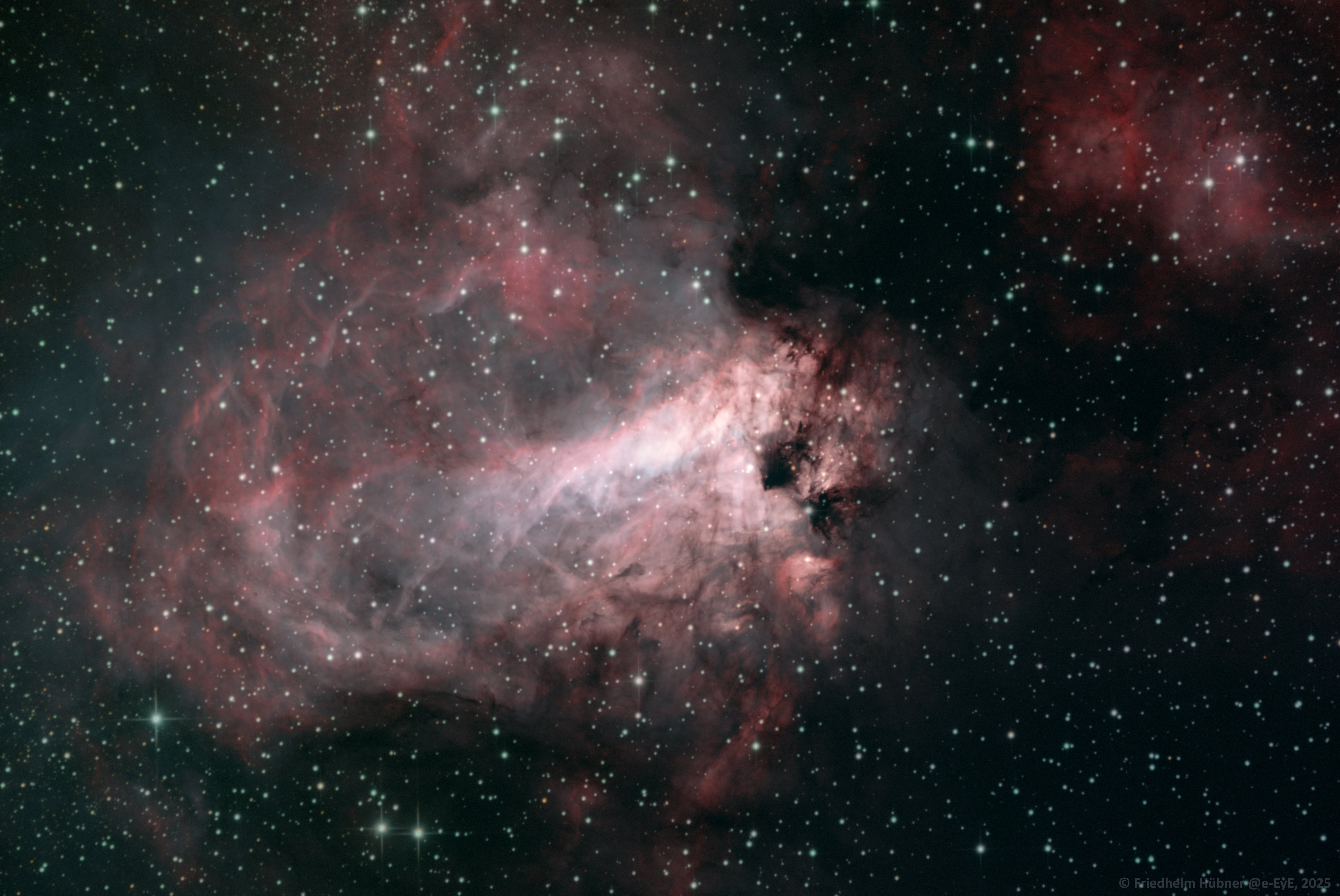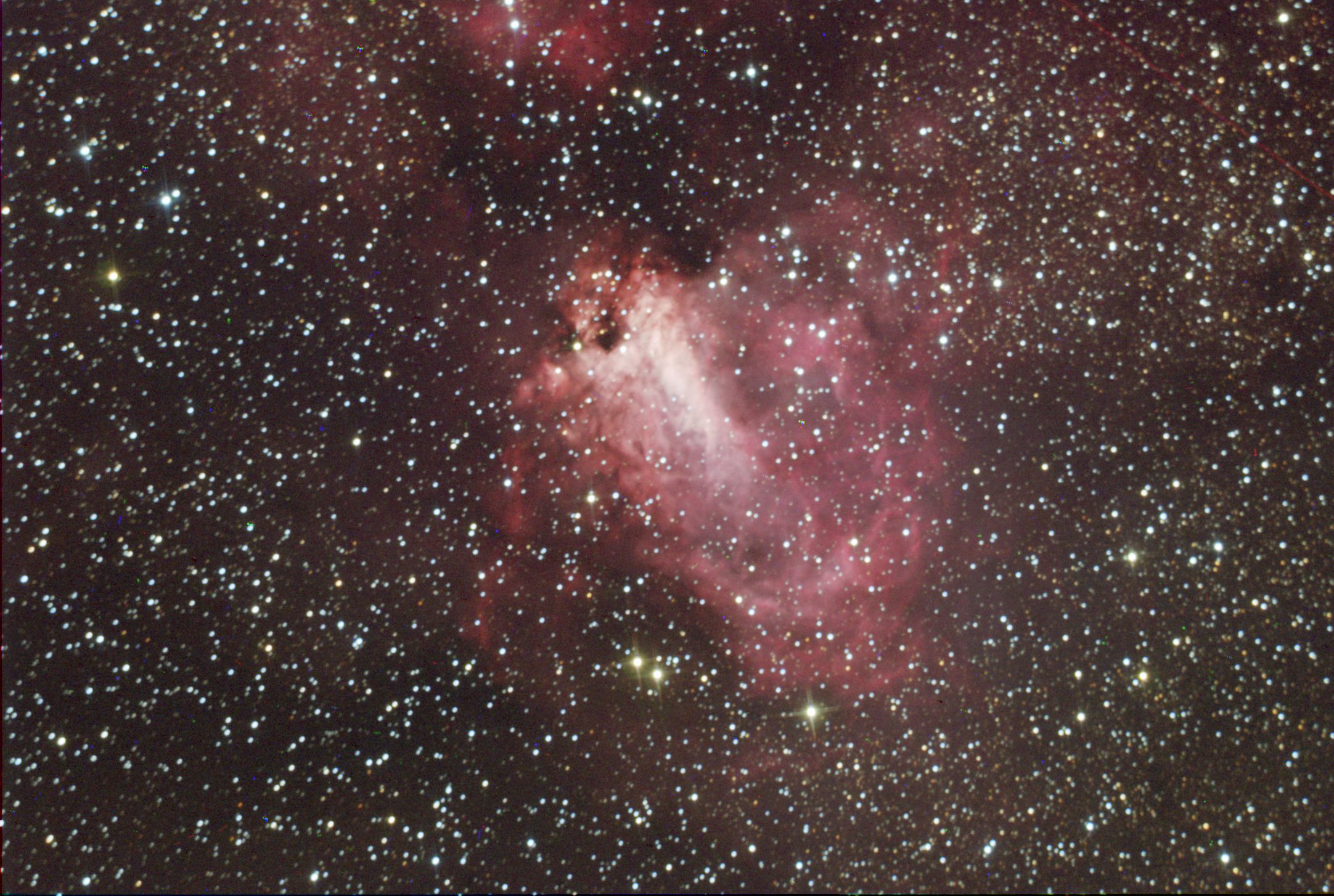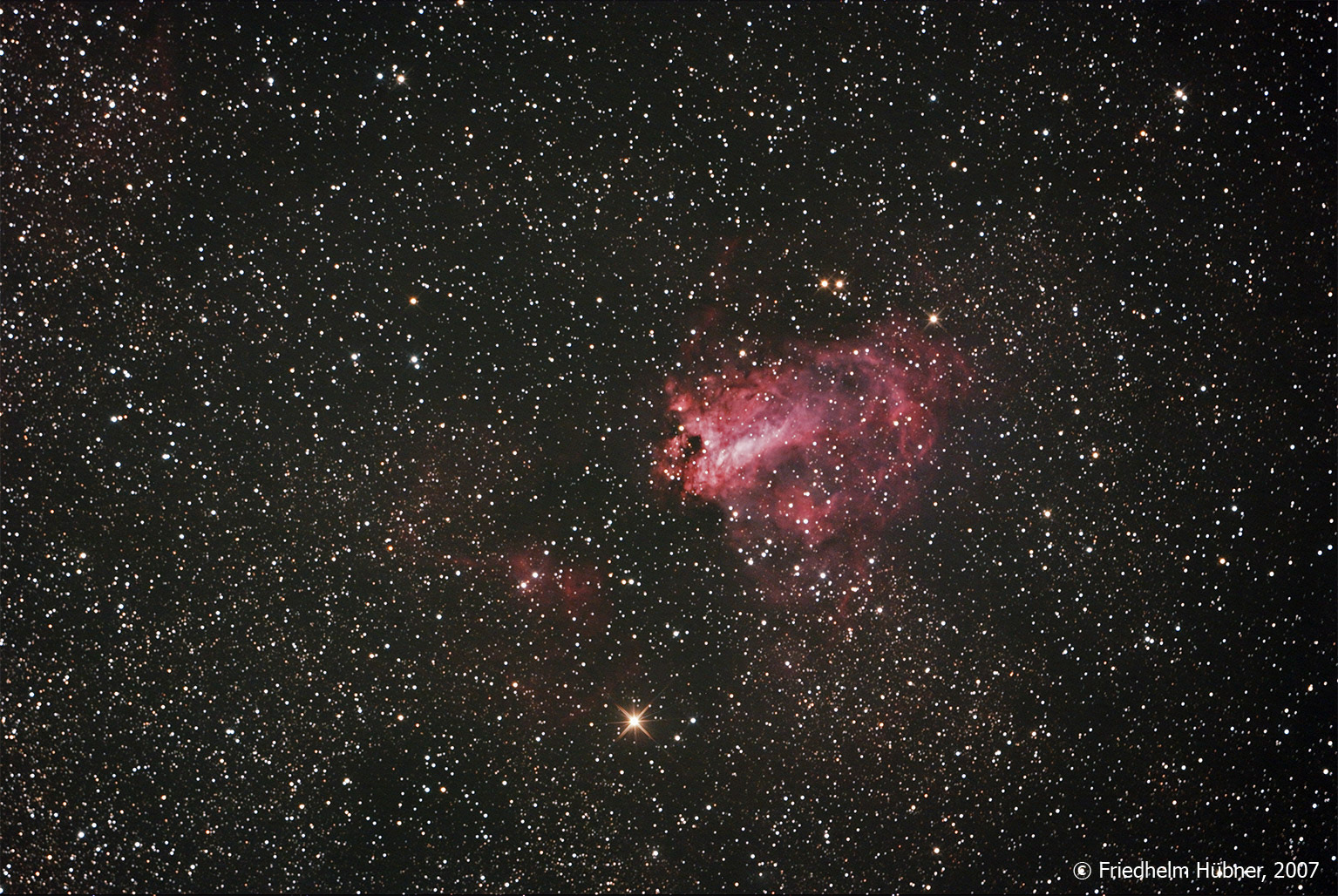|
M17 (Sgr), Omega- or Swan-Nebula

Click on the image for a larger version
| Date/Site: |
17., 20., 21., 22. and 26. June 2025, e-EyE |
Exposure/
Filter: |
R: 19 x 180 seconds,
G: 18 x 180 seconds,
B: 18 x 180 seconds,
O3: 51 x 300 seconds,
Hα: 50 x 300 seconds (-5°C) |
Camera/
Optics/
Instrument: |
ASI 2600MM Pro with Astronomik Type 2c-filter on 400mm f/5 Newton with 2" TS Comacorrector on AP1200 GTO |
|
Data acquired remotely using N.I.N.A.,
Off-Axis-Guiding with ASI120,
Focusing with Microtouch,
Calibration with MaximDL 6, processing in PixInsight 1.8 using BXT and GraXpert |
M17 is a very bright emission-nebula; it contains a very young star cluster, whose radiation causes the gaseous matter to glow.
M17 (Sgr), 2011

Click on the image for a larger version
| Date/Site: |
August 23th and 24th, 2011, Rifugio Monte Muro, Maurerberg, Southern Tyrol |
Exposure/
Filter: |
R: 6 x 600 seconds, G: 3 x 600 seconds, B: 3 x 600 seconds (-15°C) |
| Camera: |
SBIG ST10XME, CFW9 with SBIG LRGB-filters, AO-8 |
Optics/
Instrument: |
6"-Newton on Gemini 41 Observatory mount, RCC1 Coma-corrector |
|
Focusing with Robofocus |
|
Calibration, alignment and stacking: MaximDL 5.01,
Levels and curves: Photoshop CS |
This widefield-view was done at the same time with the 200mm-lens.
Some years earlier with the 300D and the 6":
M17, Omega-Nebula (Sgr)

Click on the image for a larger version
| Date/Site: |
September 13., 2007, Rifugio Monte Muro, Maurerberg, Southern Tyrol |
Exposure/
Filter: |
12 x 5 minutes |
| Camera: |
Canon EOS 300Da |
Optics/
Instrument: |
6"-Newton on Gemini 41 Observatory mount, Baader-coma-corrector |
|
focusing with RoboFocus and DSLR Focus |
|
webcam-guiding with MaximDSLR through 4"-FH-refractor |
|
Darks: Fitswork,
aligning and stacking: MaximDSLR,
levels and curves: Photoshop CS |
|


